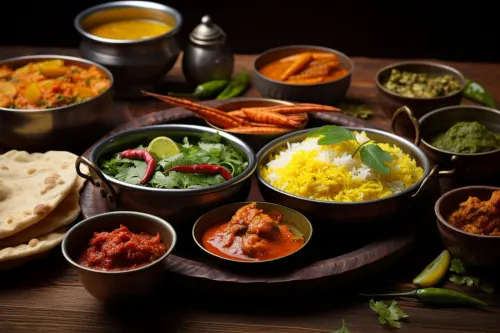Street Food Without the Guilt: Our Healthy & Hygienic Twist on Classics
The sound of a samosa splitting, the slow burn of a tangy chutney, these moments live on your tongue long after the bite is gone. But old-school street food often came with questions: how clean, how heavy, how real? Modern street eaters want the same flavour fire without the post-meal regret. It’s not about stripping tradition; it’s about flavouring it differently. Convenience doesn’t have to equal compromise. Cravings shouldn’t come with conditions. When hygiene meets heat and freshness pairs with fire, a new kind of street food takes the wheel, and it’s not slowing down.
Cooking Oil That Speaks Truth
One forgotten rule of good food: oil tells stories. Bad oil tastes like yesterday’s mistakes. Fresh oil? It wraps a dish like confidence. Great street food needs heat but not heaviness. Swapping out re-used fryer oil for clean, high-smoke-point alternatives makes snacks feel lighter without muting the crunch. Think kachori that stays crisp but doesn’t coat your tongue with regret. Or onion bhaji that shatters without dragging you into a post-meal fog. Oil doesn’t just cook; it carries flavour. When it’s clean, you taste what you’re supposed to: the masala, the soul, the joy.
Fresh Ingredients, Faster Than You Think
There’s a kind of chaos in old-market chaats: reheated potatoes, shredded lettuce past its prime, sauces on the edge. But what if the same flavour chaos came from carefully sourced produce, hand-ground spice blends, and prep that respected freshness as much as it respected fire? Street food, when remade with fresh ingredients, doesn’t lose the punch; it gains purpose. The mint hits sharper, the yogurt feels alive, and the lentils land smoother. Every ingredient counts more when there’s nothing old to hide behind. The secret isn’t fancy; it’s simply not cutting corners where it matters.
Sweets Without the Sugar Coma
No one eats one gulab jamun. That’s the problem. Indian desserts are seductive and often ruthless, deep-fried, syrup-soaked, relentless. But sweetness doesn’t need to be blunt to be beautiful. A ras malai can hold floral notes with less condensed milk. Jalebi can sing with jaggery. Malpua can feel indulgent without sugar sabotage. Reducing the load lets each flavour stretch its legs. Guests don’t slow down after dessert; they keep moving, laughing, and remembering the saffron instead of the slump. A smarter sweet hits the same emotional high with a softer physical landing. That’s real innovation.
Clean Kitchens, Honest Plates
Most guests never see the kitchen, but their body remembers it. If prep happens in chaos, the food feels it. A clean kitchen isn’t just a selling point; it’s a contract. Dishes made on sanitized counters, with gloved hands and organized systems, land differently. Trust and taste share a table. And in a world where takeout rides in the passenger seat, hygiene doesn’t hide in the back seat. The chutney may steal attention. The plating might make the Instagram post. But the peace of mind? That’s what keeps people ordering again at midnight.
Late-Night Doesn’t Mean Low Standards
Street food was always meant to be eaten when the world slowed down. Midnight after weddings, 2 AM after the club doors closed. But just because the hour’s late doesn’t mean the food should lag. Clean, protein-rich thalis. Grilled options with balance. Wraps that don’t collapse in your hands. Offering real meals instead of filler past midnight flips the script on what late-night food can be. It becomes something you reach for proudly, not secretly. The hour might be wrong on the clock, but the plate is exactly right. Cravings can be clean, too.
Modern Spice, Familiar Soul
Changing
technique doesn’t mean erasing identity. You still want the layered heat of
black pepper and clove. You still expect a puffed puri to collapse under
tension. The trick isn’t to mute spice; it’s to guide it. Spices should punch
with purpose, not overwhelm out of habit. A well-balanced chole can hit deep
without numbing your tongue. A tandoori wrap can whisper smoke instead of
shouting it. Modernizing means refining, not removing. These dishes still
remember their street-side roots. They just dress with a little more clarity
and a little less grease.
Conclusion
What defines great street food isn’t its messiness; it’s its memory. Bold, fearless flavour. Plates passed between friends. Dishes that felt chaotic but tasted like home. That spirit doesn’t disappear when health and hygiene enter the room. It evolves. Today’s street food can still bite, sizzle, and comfort, but it does so with smarter oils, cleaner kitchens, fresher prep, and a respect for balance. For those craving Indian street classics without the aftershock, Delight Street Eats offers something grounded, gut-friendly, and gloriously unforgettable with no compromises, no shortcuts, just street food done right.




Leave a Comment
Comments (0)